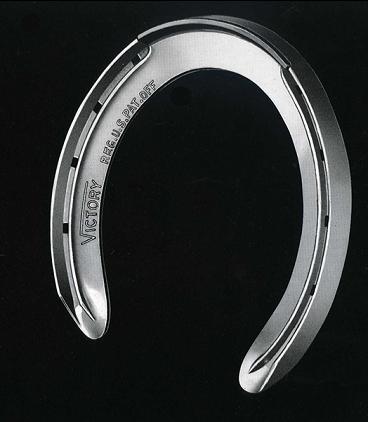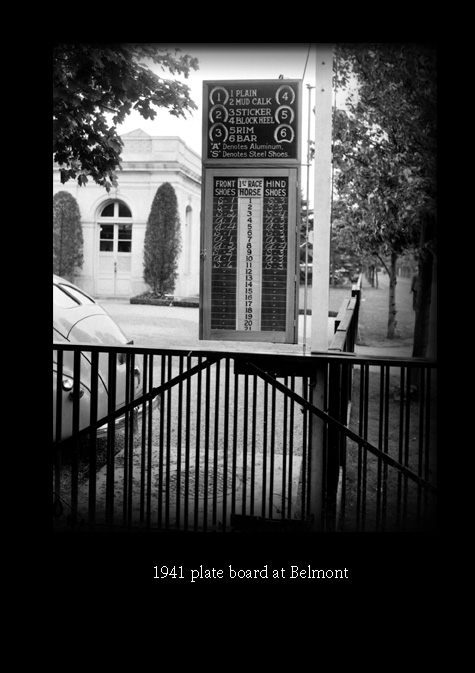
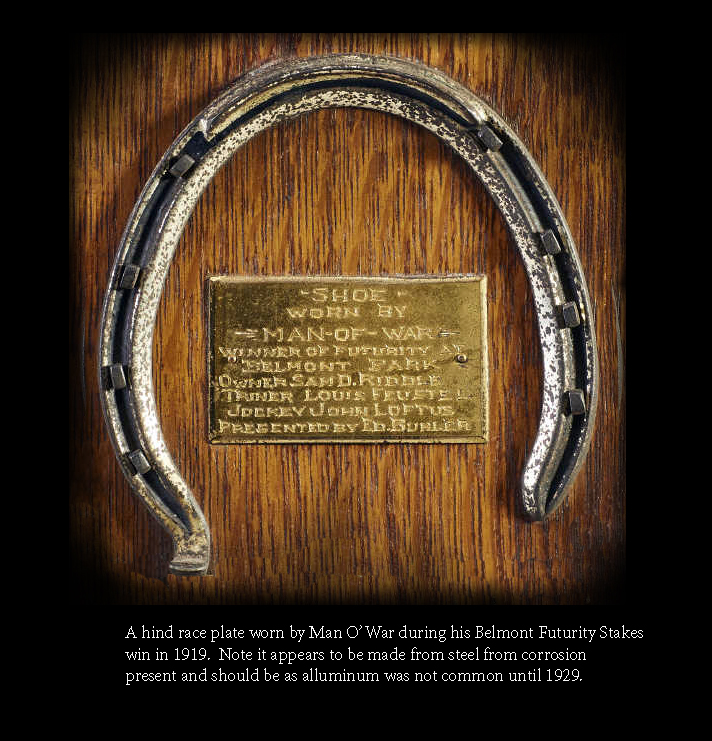
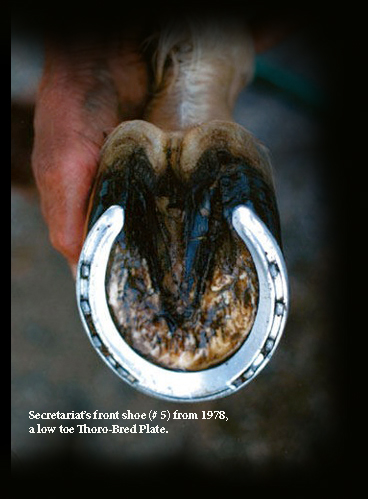
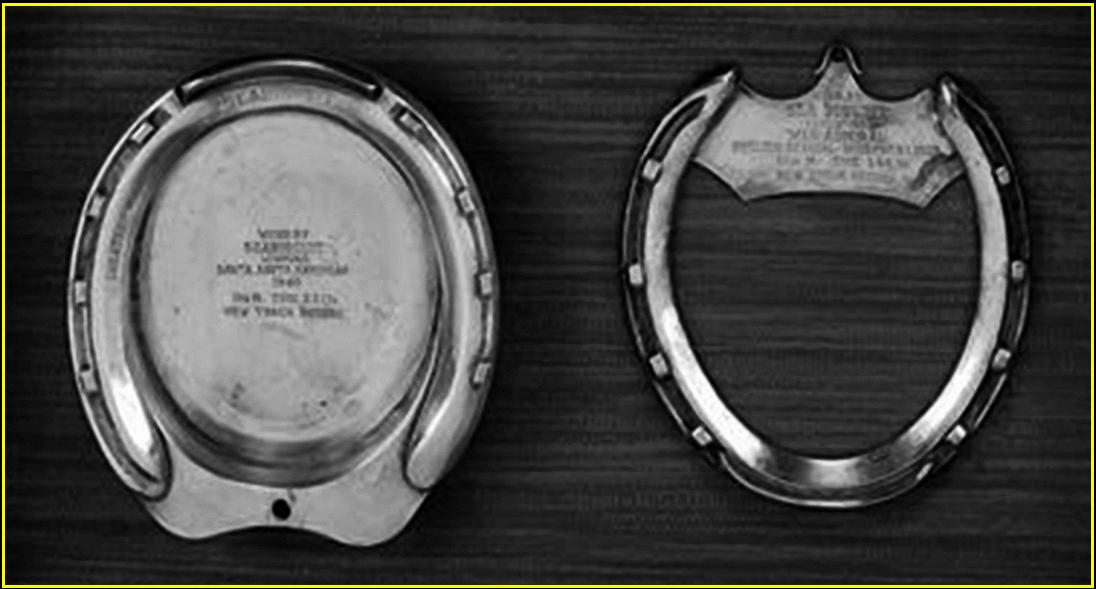
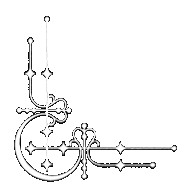
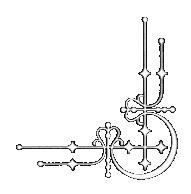


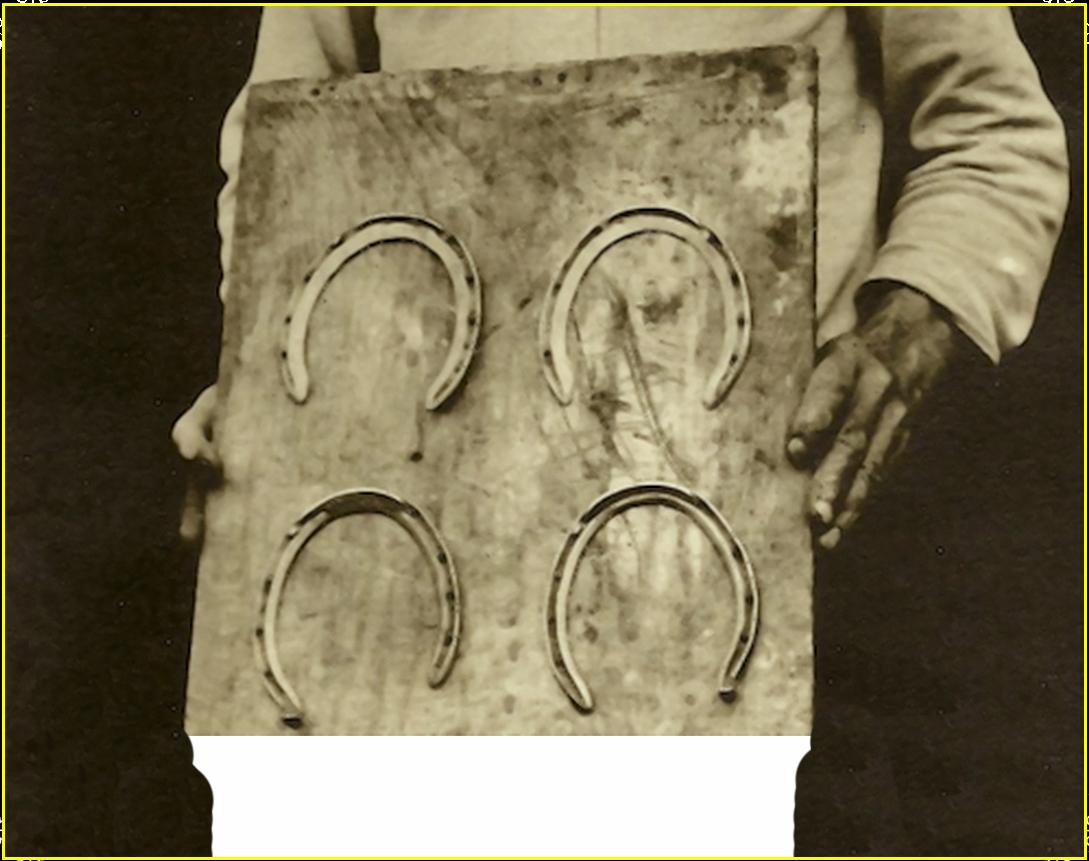





















The above photo is of the race horseshoes purportedly worn by the great Thoroughbred racehorse, Man O' War. As you can see the design is pretty much the same as worn by today's modern racehorse with perhaps the exception of the rear shoes' stickers. However, they were not made of aluminum as Man O' War's last race was in 1920. Aluminum appeared commonly around 1928 with the formation of the Victory race plate company. According to Victory company history, their founder in 1926 observed some horses shod with aluminum plates from the UK at Canada's Woodbine race track. He was impressed and intrigued. He tried them on his horse with its performance improving as a result. He was hooked! The main problem was that early aluminum was so fragile that it would only typically last one race. He consulted with Alcoa for a better aluminum alloy formulation to remedy this problem in 1928 with actual manufacturing beginning in 1929. Trainers were receptive of this new innovation as it was commonly believed by them that "an ounce on the hoof is worth a pound in the saddle". Some of the early trainers that endorsed aluminum were Sunny Jim Fitzsimmons, Hirsch Jacob, H. Guy Bedwell, Anthony Pelleteri, R. E. Handlen, W. A. Crawford, and Tom Smith of Seasbiscuit fame.
Most of the early Thoroughbred race horse plates were similar to the one pictured below . This particular plate was picked up by my grandfather many years ago and had been in my family for years, tacked to a rafter. I have seen similar early plates in the Keeneland Library. It is a very simple plate, very narrow, actually weighs less than our modern aluminum plates! Its toe grab is very low and if the nail holes are any indication, the nails used to tack it on the hoof were very small gauge. It didn't offer much wall or sole protection, but It appears to be a shoe that would be very easy on a horse's hoof to my way of thinking.
Personally, I feel that what a race plate is made of is over-hyped. There are good steel race plates being made just as light as their Aluminum counterparts. In the end, the purpose of the horseshoe is to protect the hoof from excessive wear and injury along with affecting the motion of that hoof, if need be. Thirty or more years ago, one could not race your horse in just any shoe at any time. A Thoroughbred's shoes were recorded and checked in the paddock before each race. A shoe board would be prominently displayed for the public in the race paddock as well. Not any more! Shoes are seldom checked by any race official in the pre-race examination. I am not sure why we have become lax with this very important aspect of the way a racehorse is configured but so goes "progress".
Pictured directly below is the antique steel race plate my grandfather picked up in the 1920s. Further below the antique plate will be the common aluminum race plates that can be used and seen on our modern racing Thoroughbreds. Generally speaking, I would avoid toe-grabs, particularly those that are prominent. The plates I prefer have toe grabs that are approximately the same height as the rest of the shoe, probably better considered wear "blanks" than actual toe grabs. Toe grabs can be very detrimental to soundness!
A work in progress, tune back later for more!
This is my favorite plate which I have used most often during my training career. It is sometimes called a "level-grip" (Thoro'bred) or a "outer-rim" (Victory), but it can go by other names. It is characterized with having a high outer rim, all the way around the shoe with its steel toe grab at the same height as the outer rim. The groove running from toe to heel is called a "swedge". This is the groove that the nail holes are in. It is designed in theory to fill with dirt and thus, add to the traction capabilities of that shoe. I like outer-rims because of the very low toe grab which extends into the outer rim that gives level traction mimicking a natural hoof. This shoe is easy on the horse and can be used on dirt or turf. It comes in sizes from 3-8. You will have matching designs for the hinds.
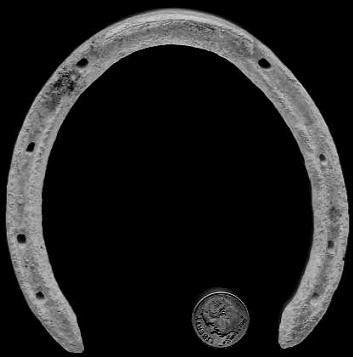
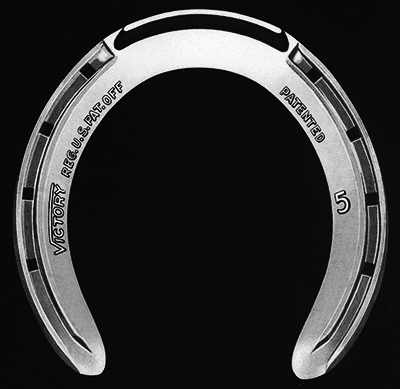
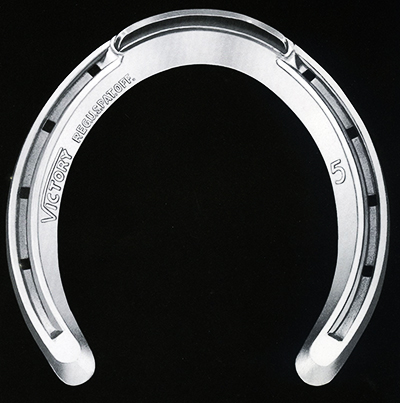
I would guess this is the most popularly used race plate that you will see on most racing Thoroughbreds. It is called a "plain" or "regular" plate. It is characterized with a steel toe grab that can be bought in a low or regular height in Victory plates and in Thoro'bred plates in low (3.8mm) , regular (5.2mm) or quarter horse (7.75mm) toes. Sizes 3-7. The matching hinds have a solid "heel" on each branch. Unlike the pervious outer-rims, there is no rim higher than the next, but it does contain the swedge groove from toe to heels as well which aids in traction. This swedge is uniform in height. Normally, if I would use this type of shoe, I would grind the steel toe grab down very low, just a hair above the aluminum surface. High toe grabs are to be avoided in my book!
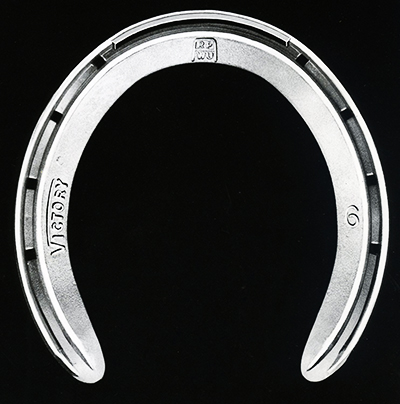
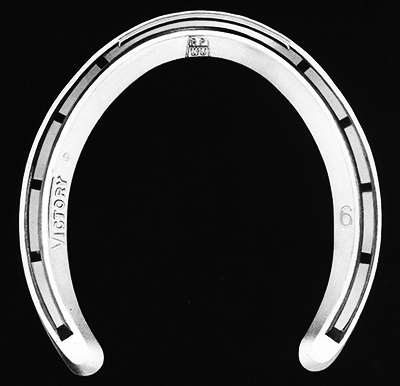
This is the "Queens" plate both front and hind shoe designs. It is a nice shoe very similar to the plain shoe except there is a toe steel blank inserted in the toe even with the aluminum surface with nothing sticking above. It is a shoe often used on the turf. This design also incorporates a swedge groove in which the nail holes sit for added traction. The hind's have a solid heel like the plains. It comes in sizes from 3-8. With no toe grab, it is a very easy plate on a horse.
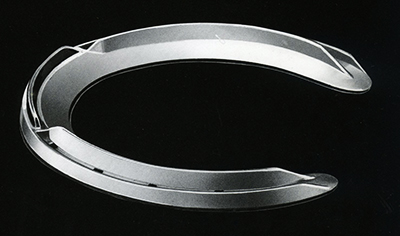
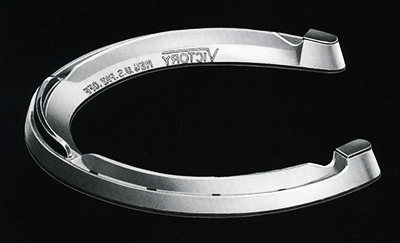
These are "inner -rims" plates characterized by having a high inner rim. The inner-rim hinds also have blocked heels. The purpose of a high inner-rim versus the level-grips' outer high rim is that the inner-rim is designed to allow the horse to break-over a bit easier. It is a good turf plate for some horses and this design is favored by polo ponies. The block heels is designed to help horses that run-down while also providing a better grip. It appears that this plate might be discontinued as I see the Victory Plate Company no longer seems to list it. To tell you the truth, I have never needed to use a pair on any of my horses, not feeling I have ever conditioned a horse that needed this configuration over the more popular designs.
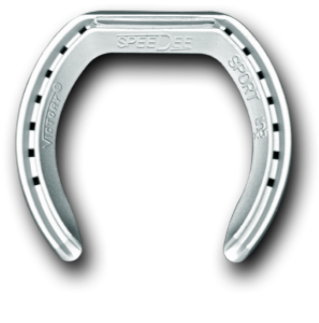
These are squared-toe plates. One on the left is made by Victory which should be valuable in those horses that need a quicker break-over. If you happen to have a horse with a low angle that needs a quicker break-over, this design may be one answer. Victory calls it a "Sport SpeeDee XLT" and has a 2mm raised toe grab. There is a swedge from the toe to the heels for added traction and comes in sizes 4-8. The one on the right is made by the Thoro'bred company and called a "World Race Plate". It is of similar design but may project an even easier break-over at the toe than Victory's. It has more of a rocker action than the Victory plate's. The World Race Plate also has a more interesting designed toe-grab, very low profile.
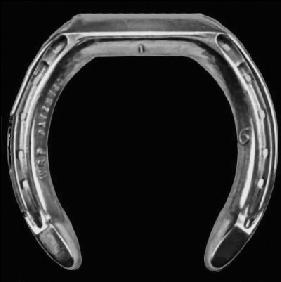
These are two plates worn by Seabiscuit and sold at auction in the Fall of 2014 for $35,000+. The rear plate on the right was worn when he beat Triple Crown winner War Admiral in his highly publicized match race of 1938. The two trailers of the horseshoe are connected with an added sterling plate engraved, "WORN BY SEA BISCUIT DEFEATING WAR ADMIRAL - PIMLICO SPECIAL - November 1, 1938 - 1 3/16 M. TIME 1.56 3/5 - NEW TRACK RECORD." The second, a front shoe to the left was on Seabiscuit's hoof for his last race when he won the Santa Anita handicap. Both plates are of the regular design style with a substantial toe grab very closely mirroring what is worn by the majority of racehorses, today. Considering Seabiscuit's soundness problems, this was probably not a very good choice in design. A toe grab would be detrimental to his injured left suspensory. One would want a shoe that gave a free rolling break-over at the toe which the toe grab would not.













